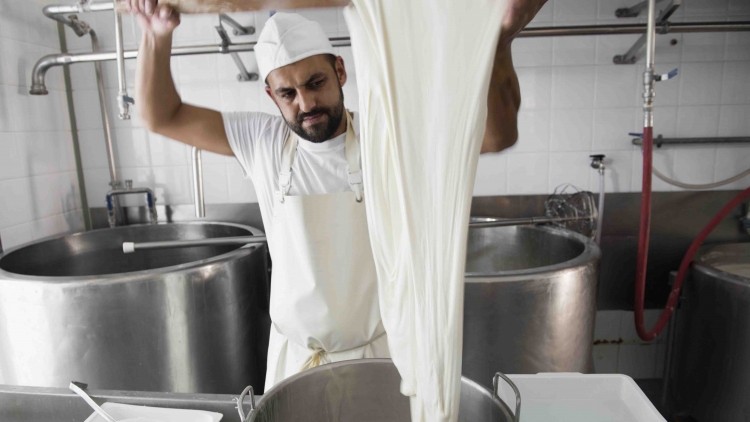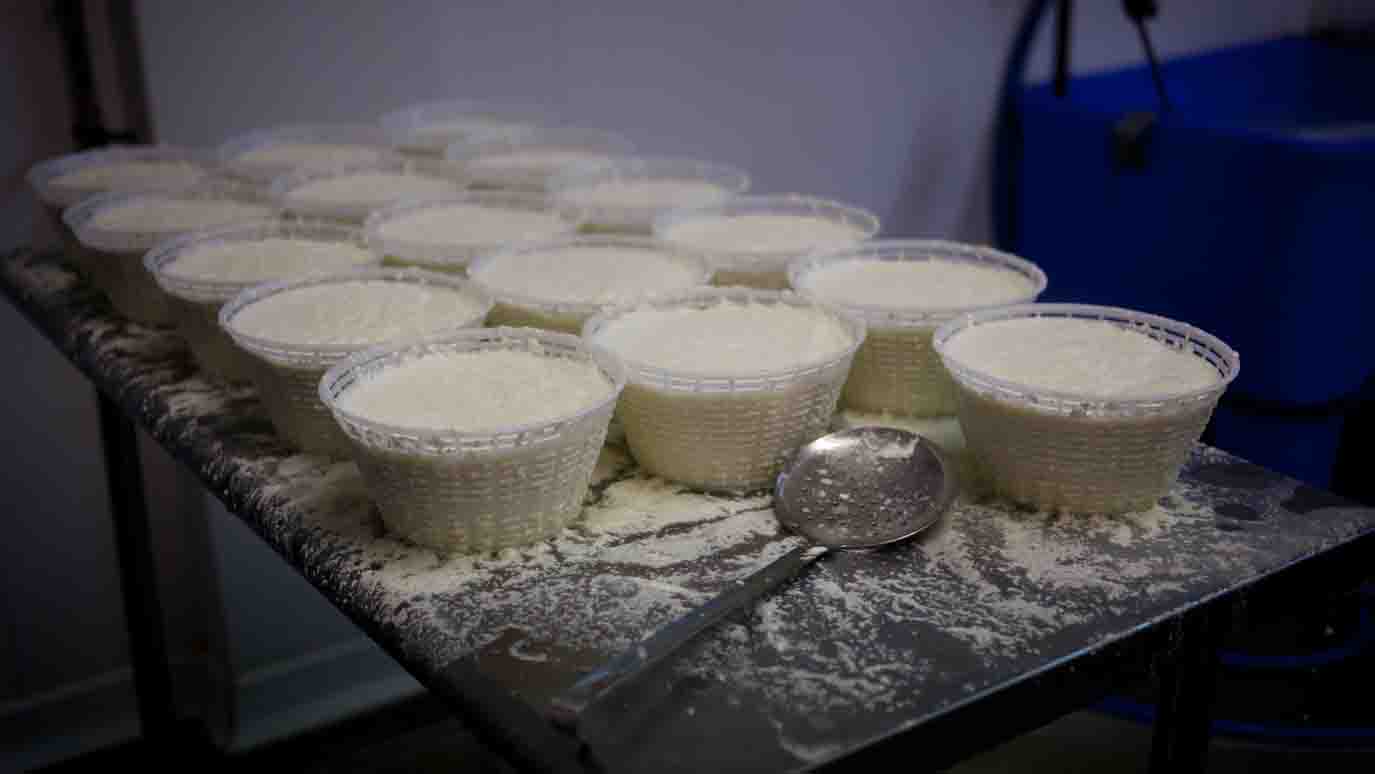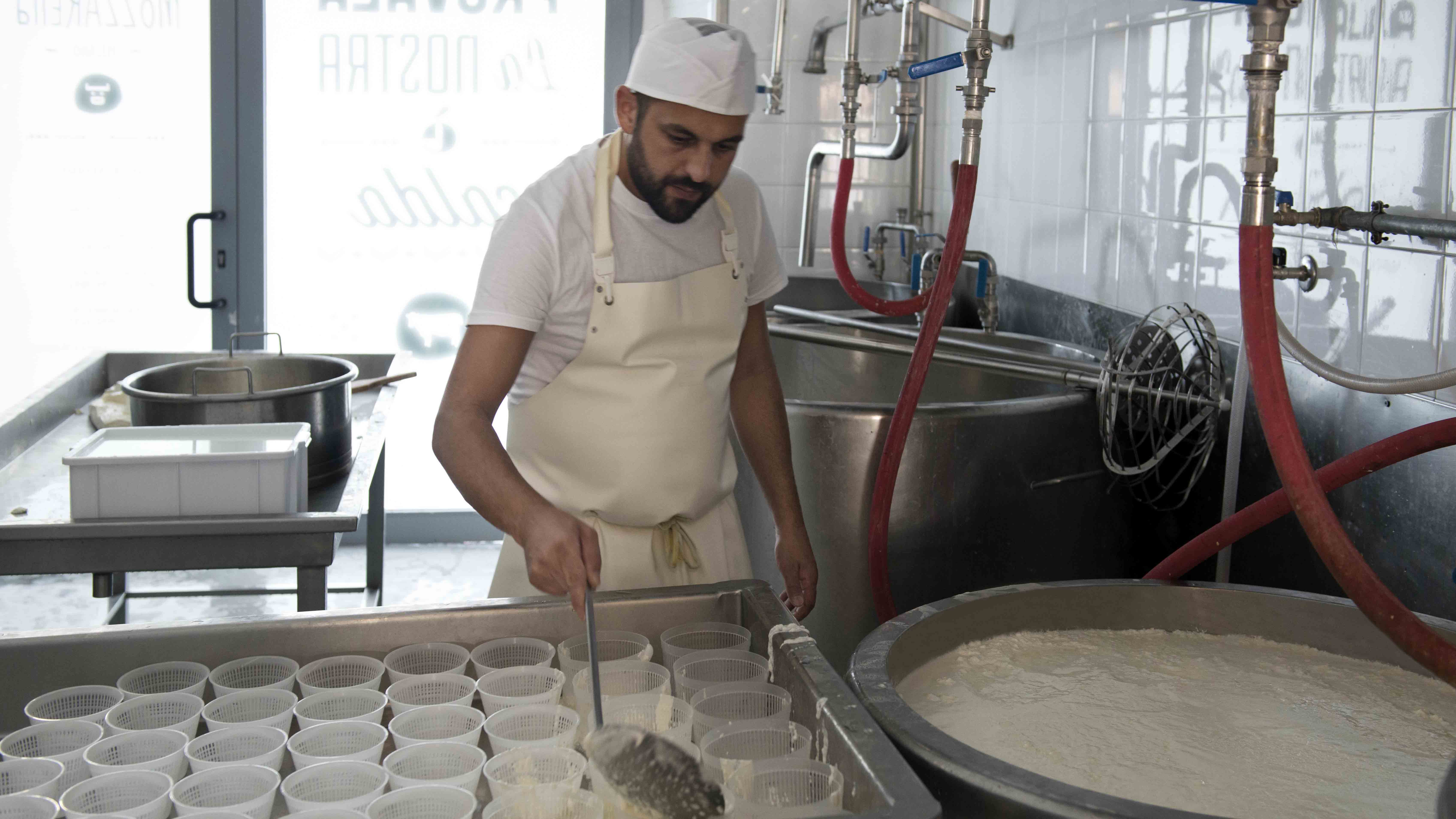Culture Club: meet the British artisans rethinking fresh cheese

Soft, yielding and bursting with the sweet tang of fresh milk, mozzarella should be one of life’s purest pleasures. But all too often the experience is, as the late AA Gill once wrote, “like eating a blind whale’s eyeball”. That’s because much of the mozzarella that makes its way onto British menus is made in huge factories in Europe and sits around in the supply chain for days and weeks, resulting in cheese that is either strangely spongey or rubbery enough to bounce off walls.
The secret to good mozzarella, as with all fresh cheeses, explains cheesemaker Simona Di Vietri, is to eat it within hours not weeks of it being made.
“In Italy we say, ‘There’s mozzarella, and then there’s mozzarella’,” she says.
“The difference between something that is just a day old and a week old is really clear. When mozzarella is fresh it’s got an incredible soft, elastic texture and full flavour, but if it’s sitting in water for too long it becomes soggy and you lose the creaminess.”
Di Vietri’s west London-based company, La Latteria, works through the night turning British cow’s milk into fior di latte mozarella, burrata, stracciatella and ricotta, before delivering it to restaurants first thing in the morning.
“Our main advantage is that we’re in London so have zero supply chain,” she says.
“The cheese goes from production to consumption in just a few hours, but cheesemakers in Italy often adjust their production when they cater for foreign markets, adding preservatives and using techniques to make the cheese firmer because the product needs a longer shelf life.”
The Brexit vote in 2016 saw the price of Italian cheeses increase by 10% to 15% almost overnight, says Di Vietri, but La Latteria’s products still carry a 20% to 30% premium compared to industrial products from Italy. Not that chefs seem to mind. The company’s growing list of restaurant customers include Elystan Street, which serves its burrata with smashed, marinated and deep fried courgettes.
Rise of UK producers
La Latteria is part of a new wave of British cheesemakers benefiting from demand from chefs for super-fresh cheeses. Gringa Dairy in Peckham supplies restaurants, such as El Pastor, Wahaca and Santo Remedio, with Mexican fresh cheeses, including Queso Fresco, a crumbly white cheese, the mozzarella-like Oaxaca and the semi-firm melting cheese Chihuahua. Owner Kristen Schnepp set up the company in 2013 and has seen sales rocket to the point that she has recently expanded to double capacity.
“Mexican restaurants used to use things like cheap mozzarella in place of Oaxaca and feta as a substitute for Queso Fresco because they couldn’t find these cheeses over here, but they really weren’t meeting the brief or adding value to the cuisine,” she says.
“We’ve found a niche at a time when there’s a greater awareness of fresh cheese. People are more conscious about how much meat they eat and there is a better understanding that cheese is a really important ingredient.”
According to Arla Pro – which supplies large quantities of cheese including mozzarella, paneer and soft cheese – the fresh cheese category is performing well, with growth clocked at around 3.5% year-on-year.
“Growth in cheese has been almost double the rate of market growth since the start of 2018, largely driven by industry and consumer trends that we are best placed to deliver to,” says a spokesperson.
“In the professional kitchen, convenience and ease of use means formats such as pre-grated or sliced are seeing significant growth. And finally variety – cheese is being used in many more ways, especially as an addition to salads.”
The rise of vegetarian and flexitarian diets is good news for chefs, according to Tom Calver, director at Somerset-based Westcombe Dairy, which makes ricotta from the whey left over from making cheddar.
“If you think of ricotta as an alternative protein source to meat, where you might pay £20 a kilogram, it gives chefs great margins,” he says.
Somerset ricotta is naturally high in protein and costs £7.50 per kg. That’s more than twice what chefs pay for long-life, industrial alternatives, but Calver says the difference in quality is stark.
“With most industrial ricotta, the cheese has been injected directly into the pot, which means the texture is tacky and cloying,” he says.
“With ours, the curd is literally lifted into individual straining baskets, which drain and are then placed directly into the packaging. The texture is light and dissolves in the mouth.”
Eat on day of production
At Plum & Split Milk, in London’s Kings Cross, the ricotta is served on toast with broad beans, chilli and mint, while Padella, in Southwark, uses it as a filling for ravioli, but it also works in desserts and baked goods, such as cheesecake and cannoli.
Freshness is key, adds Calver, with the albumin protein in ricotta giving off a sulphuric odour if it’s left too long. “In Italy, they say you should eat ricotta the same day it is produced or maybe the next day,” he says.
Back at Gringa Dairy, Kristen Schnepp sums it up succinctly:
“Fresh cheeses, by their nature, are not made to hang about. Their brilliance is in their freshness.”
Curd is the word
Curd has been the word on restaurant menus for several years now, used in everything from salads to desserts. The trend started with goats’ curd, but there are now other options for chefs to choose from. The Old Cheese Room at Neston Park Estate in Wiltshire has seen sales of its Jersey cow’s milk curd, which is also available flavoured with wasabi or truffle, grow by 15% to 20% in the past year.
“It’s quite different to goat’s curd,” explains cheesemaker Julianna Sedli.
“It has a very yellow colour and silky texture with a creamy and refreshing lemony flavour. A lot of this is because Jersey milk is naturally high in butterfat but also because of the clover and grasses the cows graze on in the meadows.”
Ewe’s curd is also increasingly common on menus thanks to its sweet and creamy flavour.
“Sheep’s milk is becoming more mainstream partly because it’s delicious, but also there is an increased understanding of the health benefits,” says Angela Morris, co-owner of Homewood Cheeses near Bristol, which makes ewes’ curd, and halloumi and feta-style cheeses.
“People who find cow’s milk difficult to eat often don’t the have same issues with sheep’s milk. There’s a certain sweetness to it, which is different to goat’s curd. You don’t get that goaty aftertaste.”
Chef Josh Eggleton is a big fan, serving the curd with pickled beetroot as a canapé on the menu at his nearby pub The Pony & Trap, or by rolling it into balls, which he coats in parmesan and serves with cubes of tomato consommé jelly and basil purée
























